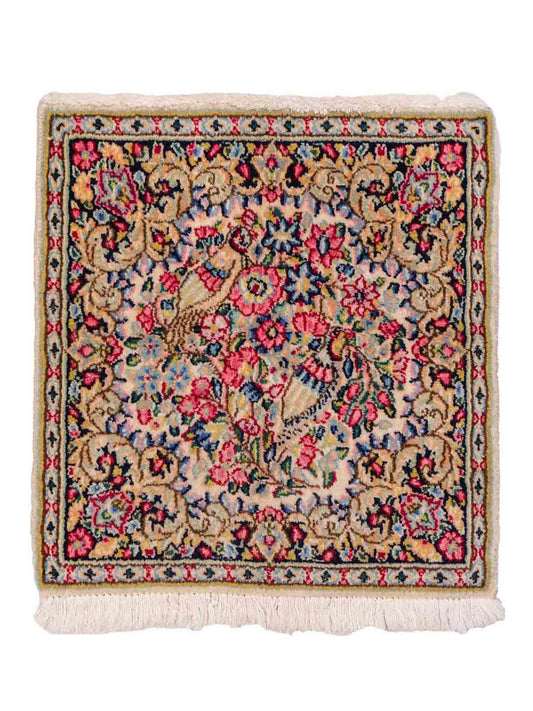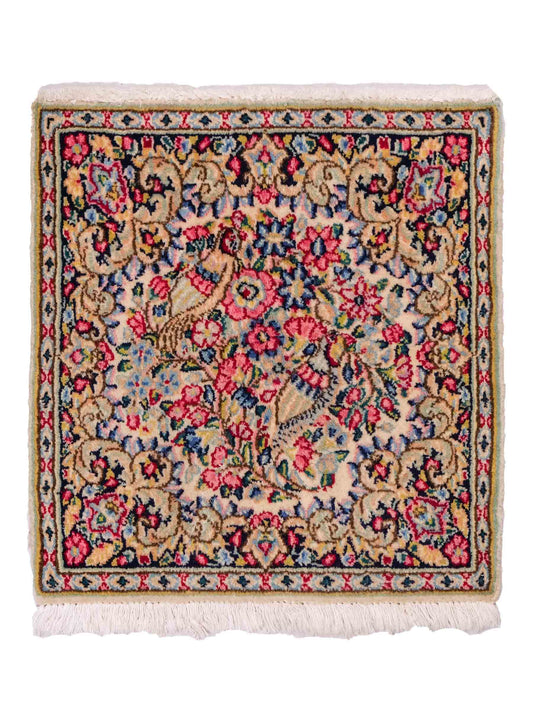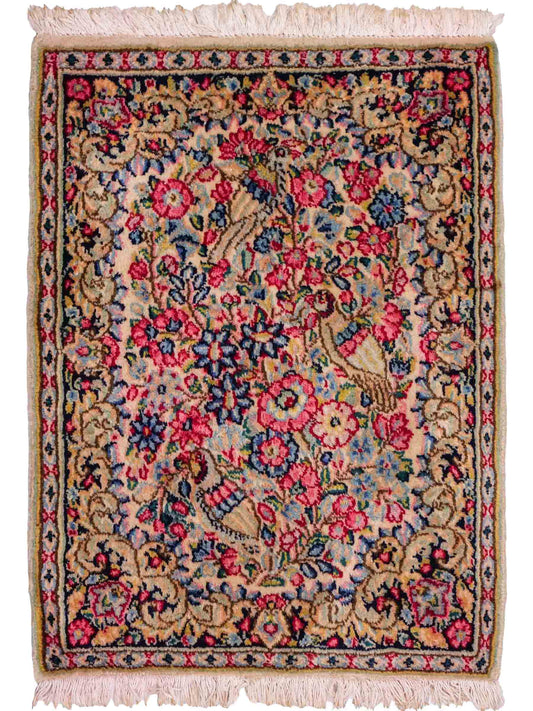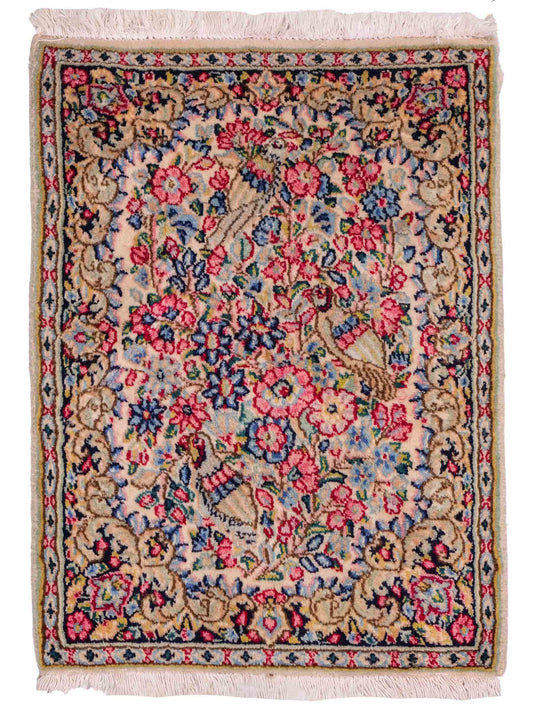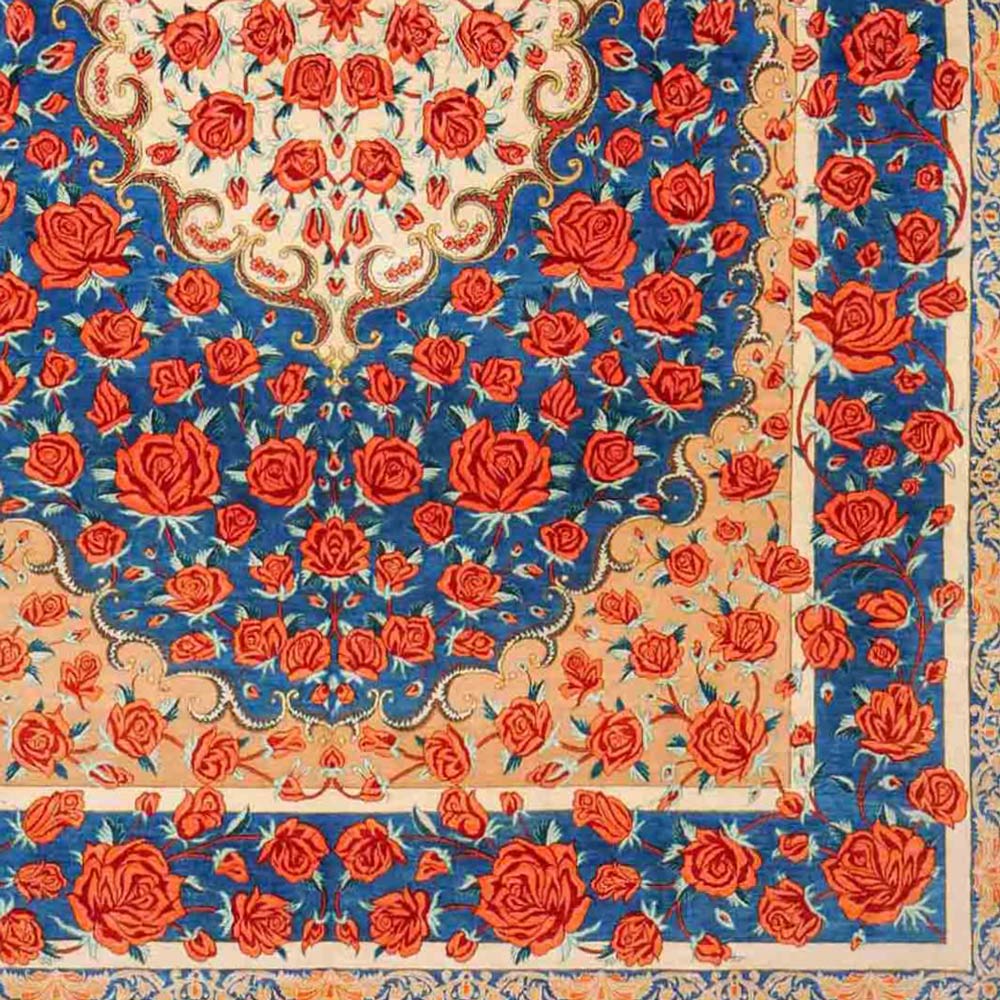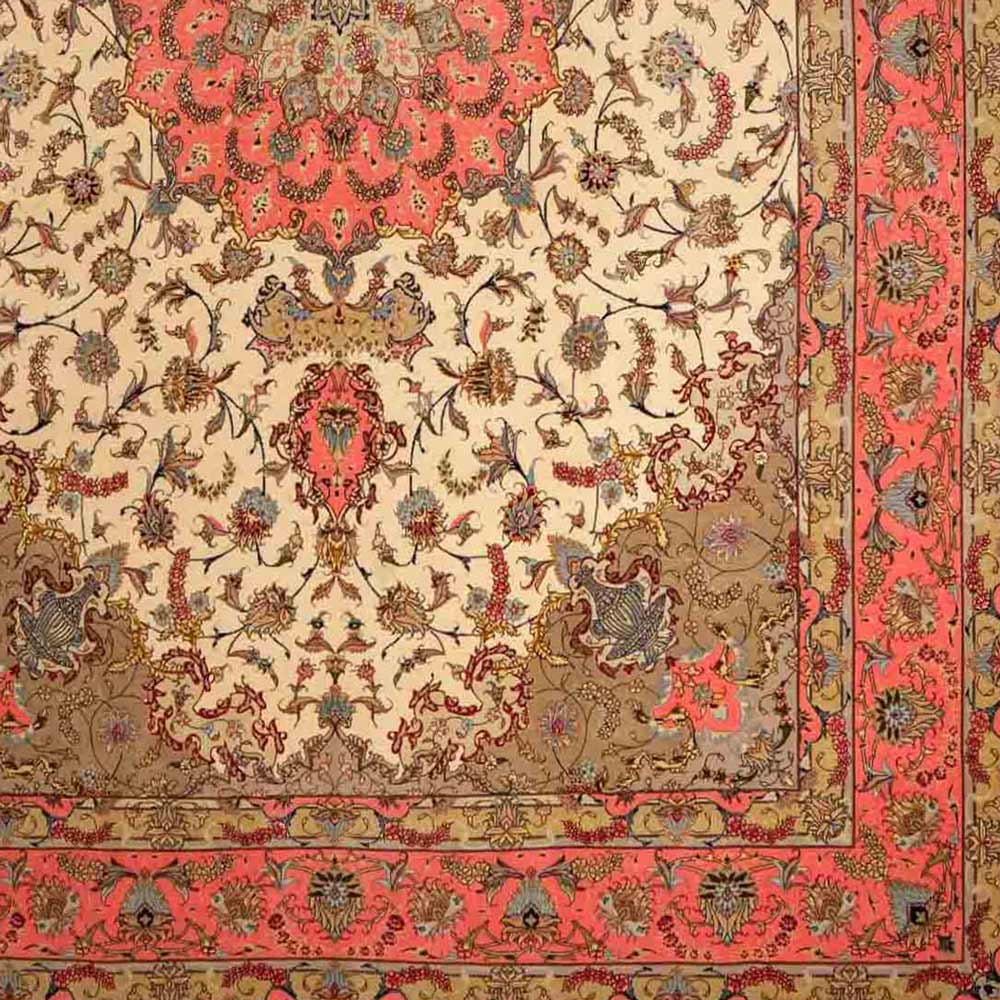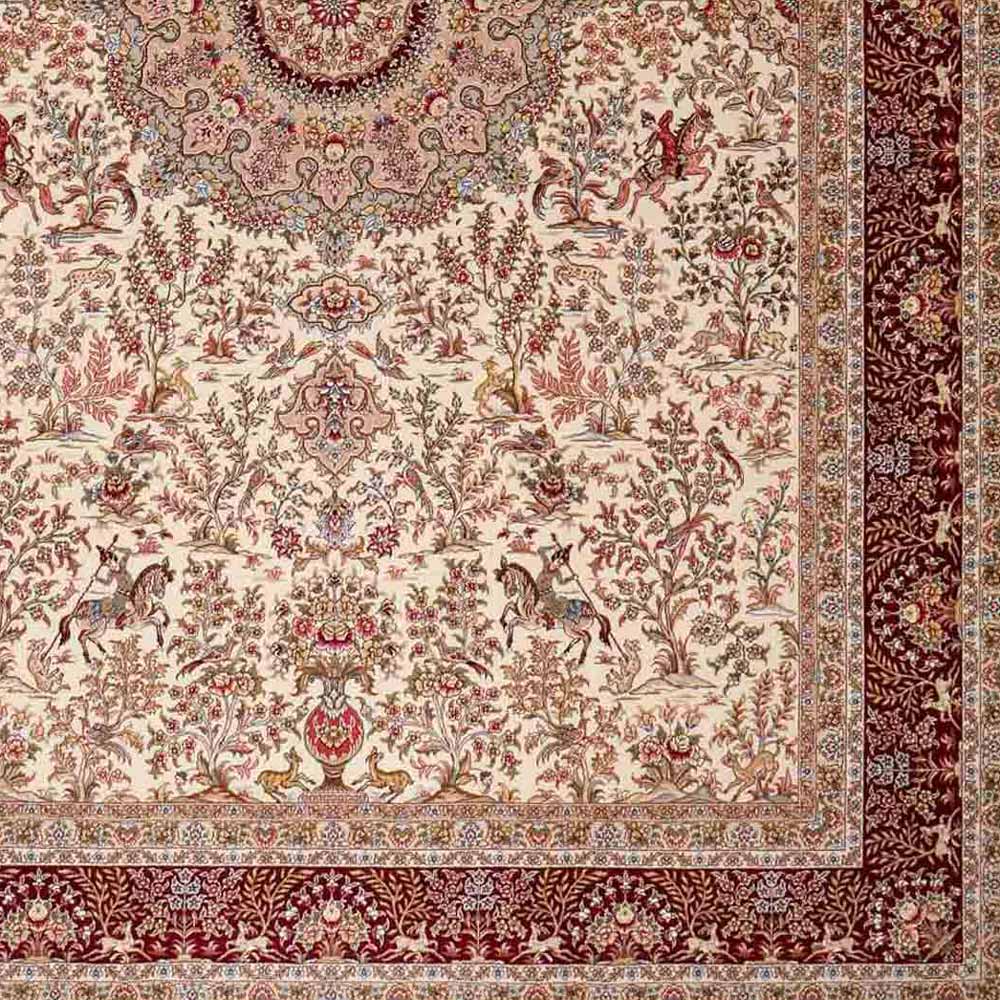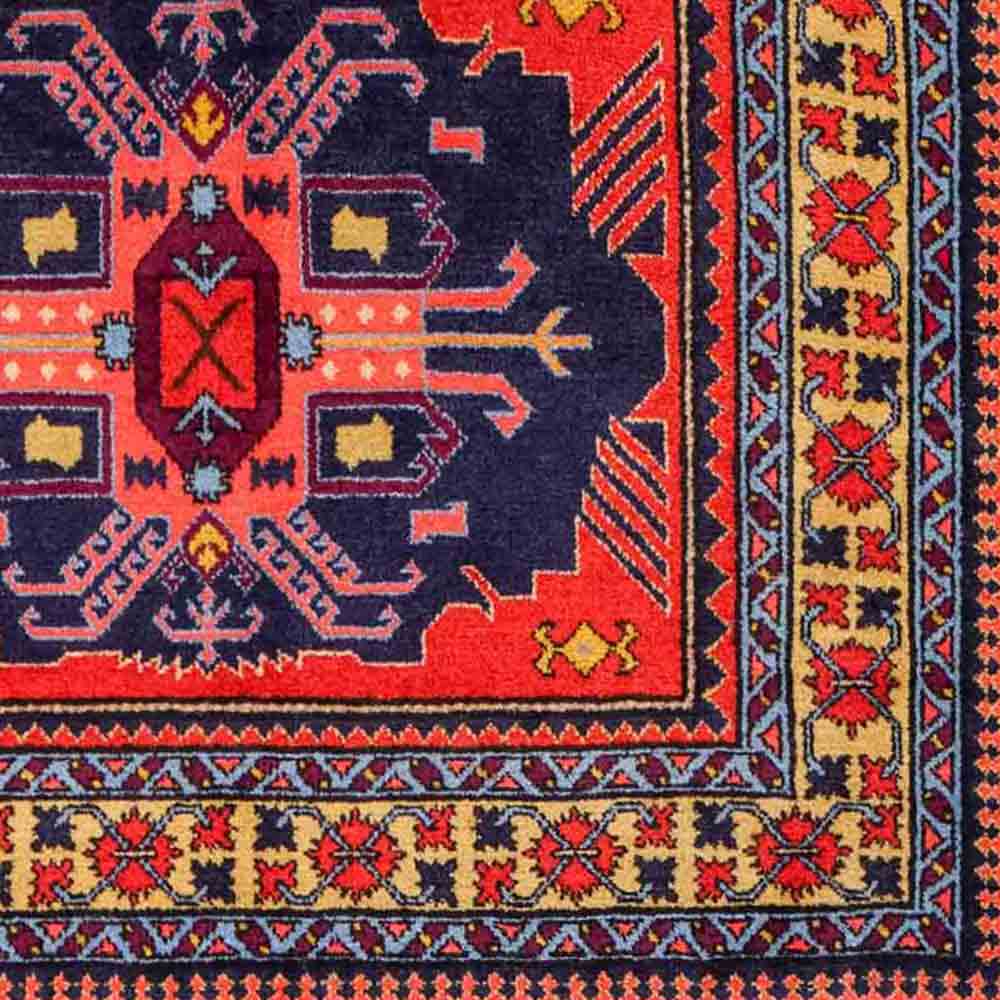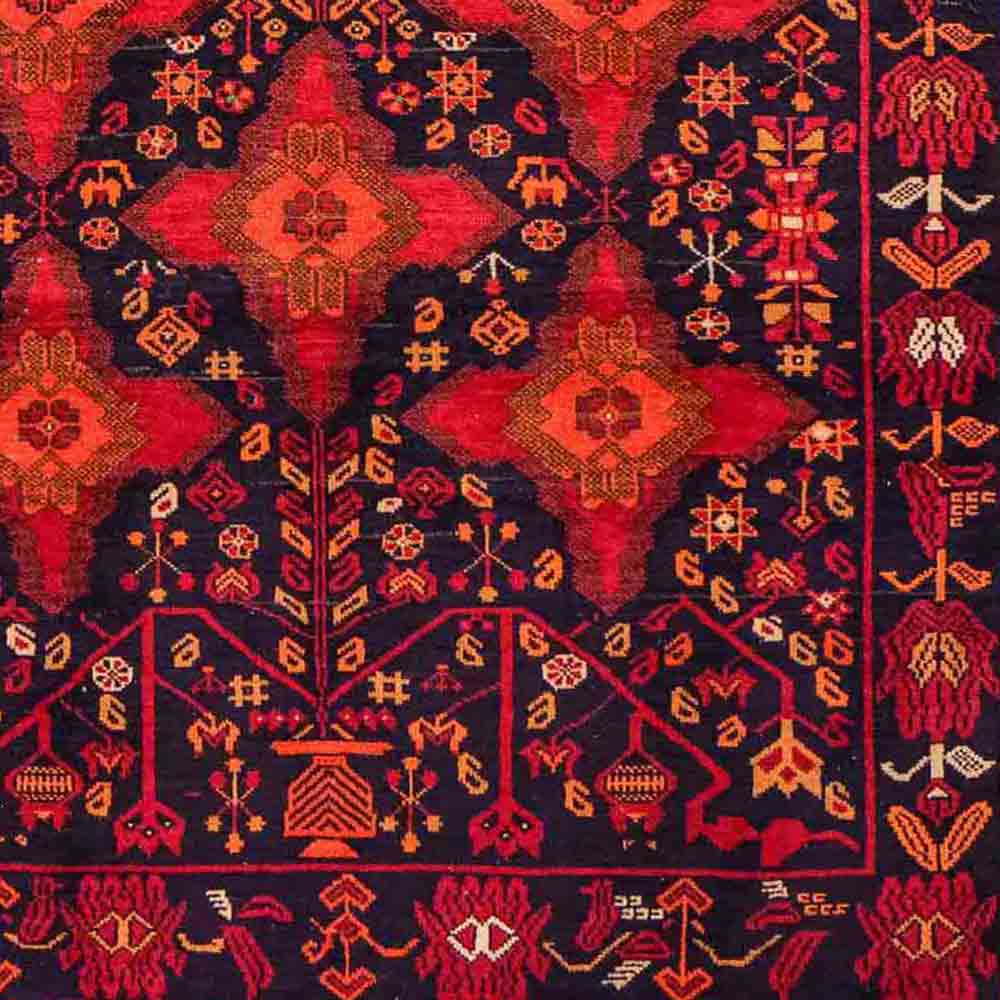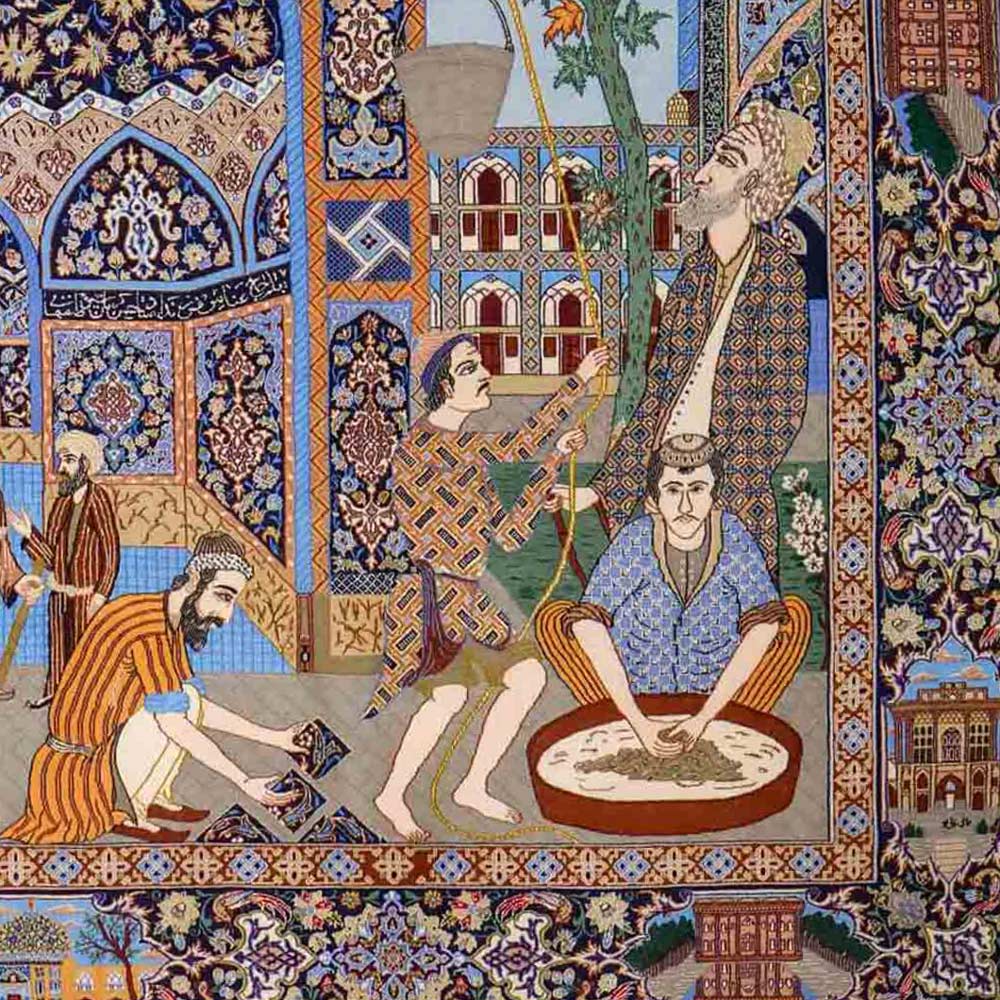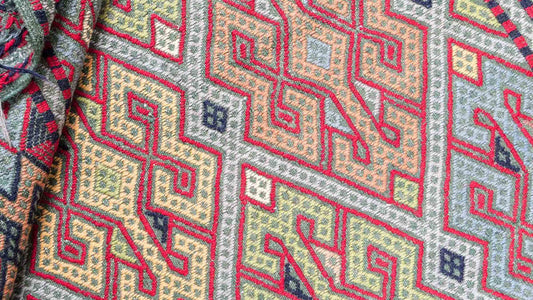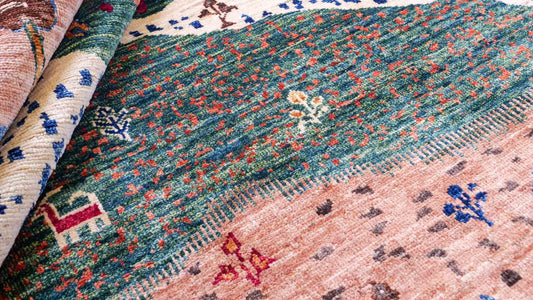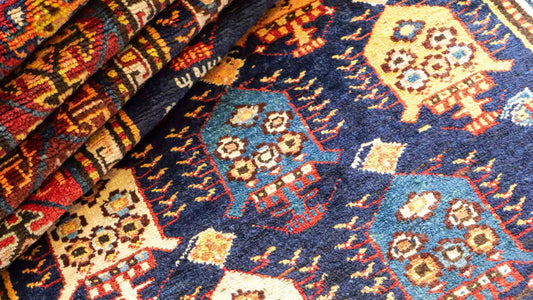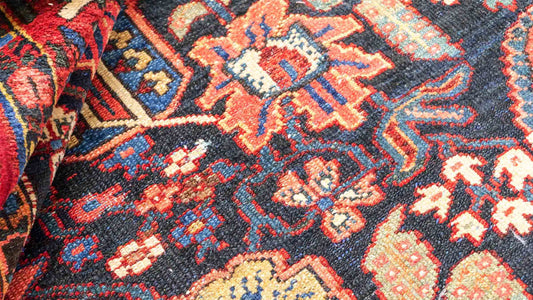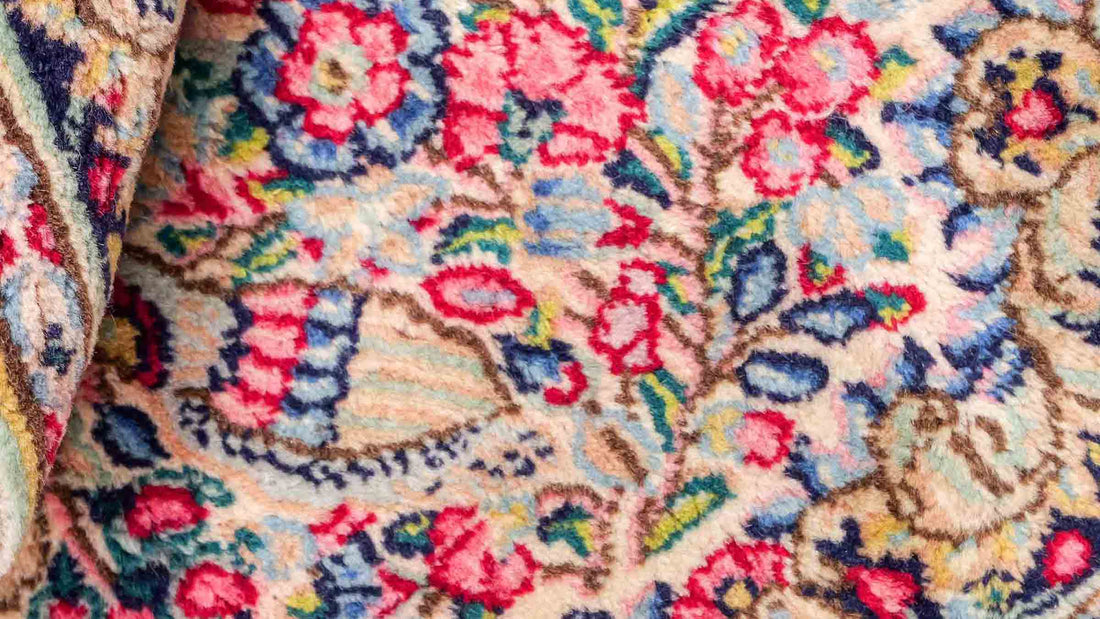
Kerman
Daniel KhademiImmerse yourself in the world of Kerman rugs—Persian masterpieces renowned for exquisite craftsmanship, magnificent colors, and traditional designs. This article reveals everything about their history, origin, production, patterns, color diversity, and why a Kerman rug is both a stable investment and a unique work of art for your home.
Kerman Rugs: Key Facts at a Glance
- Origin: Kerman, Southeastern Iran (Kerman Province), legendary hub for craftsmanship and culture
- Material: Premium sheep’s wool, cotton, or rarely silk; preferably natural fibers, often pure new wool
- Knot Density: 160,000–1,200,000 knots/m² (very high, fine, robust)
- Designs & Patterns: Floral ornaments, luxurious medallions, geometric and rhythmic motifs, delicate arabesques
- Colors: Deep reds, various shades of blue, soft beiges, green and earth tones, mostly natural dyes
- Features: Highly detailed, large formats, exceptional color brilliance, often one-of-a-kind pieces, highly valued by collectors
- Areas of use: Living & dining rooms, representative spaces, collector’s pieces & investment, suitable for classic & modern interiors
Explore our curated collection of exclusive Kerman Rugs & Designs —find your one-of-a-kind masterpiece today!
The Origins and History of Kerman Rugs
Kerman is located in the eponymous province on the Iranian plateau and serves as a major crossroads on trade routes connecting East and West. This strategic location has led to the blending of many cultures and influences over the centuries—reflected in rug designs as well.
The art of rug-making in Kerman began in the 16th century, during the Safavid dynasty, when the craft flourished. Important historical shifts, such as the political changes of the Qajar and Pahlavi dynasties, affected not only weaving techniques but also rug design and choice of materials. Famous workshops and rug-makers, some of whose families perfected the craft over generations, are a prominent part of this story—such as the city’s renowned ateliers celebrated for their quality and style.
The Cultural Significance of Kerman Rugs
Kerman rugs hold great esteem in Iranian society. They are seen not only as utilitarian objects but also as artistic expressions and cultural inheritances. Traditionally, rugs were given as gifts for weddings or special occasions, often carrying profound symbolism.
The rugs are not only essential to Iranian interior design, they also reflect the owner’s values and status. A high-quality hand-knotted rug can be passed down for generations, becoming a precious heirloom. Furthermore, making a Kerman rug is often a communal affair, deeply rooted in local culture and tradition.
Rug-making positively impacts the local economy and helps preserve cultural practices. Many women in rural Iran are engaged in rug production, providing them a livelihood and a way to continue family traditions.
Kerman Rug Production Process
Creating a Kerman rug is a true artisanal process that demands attention to detail and specific expertise. The complete process can take several months to years, depending on the rug’s size and complexity.
Production Steps:
- Material Selection: The best wool, silk, or cotton is chosen. Local sheep's wool is especially prized for its durability and texture. Silk is often used in premium rugs for a luxurious sheen.
- Dyeing the Wool: Wool fibers are dyed with natural dyes sourced from plants, minerals, or insects. The colors are often vivid and can vary depending on the region and material availability. The dyeing stage is crucial, as shades and depth determine the rug’s visual appeal.
- Knotting Technique: The warp threads are stretched on a sturdy loom. Knots are formed according to a predetermined design. Kerman rugs are known for their dense, high-quality knots, often using the Persian knot, which produces especially robust and intricate rugs.
- Finishing: After knotting, the rug is carefully cleaned and surplus knots are trimmed to ensure a uniform surface. Edges are finished with special techniques for enhanced durability and an elegant finish.
- Quality Control: Each rug undergoes strict quality control to ensure it meets the high standards of Kerman rug artistry.
Knot Density: Art in Every Knot
Knot density is a decisive feature of a Kerman rug, affecting both the quality and longevity of the finished piece. On average, Kerman rugs exhibit 160,000 to 1,200,000 knots per square meter. This high knot density creates particularly detailed patterns and a fine texture—hallmarks of Kerman weaving mastery. Generally, the higher the density, the more durable and long-lasting the rug is—making it a prime investment.
Patterns, Designs & Colors of Kerman Rugs
Classic Designs
- Floral Motifs: Characteristic floral patterns often feature intricate bouquets and stylized plants. These designs reflect the region’s diverse flora and convey a sense of being close to nature.
- Medallion Rugs: These rugs display a prominent central medallion, usually surrounded by symmetrical motifs and floral elements. They are especially striking and often highly intricate.
- Geometric Patterns: Some Kerman rugs combine geometric forms and rhythmic motifs, harmoniously complementing each other and creating engaging visual effects—these designs are especially popular in modern interiors.
Traditional Colors
- Reds: These hues bring warmth and energy to a rug.
- Blues: Blue is used often and symbolizes tranquility—from sky blue to deep navy.
- Green & Earth Tones: These shades lend a touch of nature and freshness.
- Beige, Cream, and Natural Colors: Neutral tones provide a balanced base and fit beautifully into many interior styles.
Design Classics Compared: Ilam, Kerman, Kashan & Moud Rugs
| Feature | Ilam | Kerman | Kashan | Moud |
| Origin | Western Iran, Ilam / Elam Province | Southeast Iran, Kerman Province | Northeast Iran, Isfahan Province |
Eastern Iran, South Khorasan Province |
| Material | Premium sheep's wool | Premium sheep's wool | Premium sheep's wool, rarely silk | Premium sheep's wool |
| Knot Density | 200,000 – 300,000 knots/m² | 160,000 – 1,200,000 knots/m² | 120,000 – 600,000 knots/m² | 160,000 – 300,000 knots/m² |
| Design | Floral and geometric, medallions | Floral and geometric medallions, mirror motifs | Floral and geometric medallions, tableaus |
Floral and geometric medallions, tribal designs |
| Colors |
Reds, blues, earth tones, natural dyes |
Reds, blues, earth tones, natural dyes |
Reds, blues, greens, earth tones, natural dyes |
Reds, blues, earth tones, natural dyes |
| Features |
Authentic, lively patterns |
High-quality, detailed, unique designs |
Naturally produced, long-lasting |
Rustic, tribal, artisanal, authentic |
| Value/Price Range |
Mid-range, growing interest |
Mid to premium range, collectors’ items |
Mid to premium range, investment grade |
Mid-range, value stable |
Checklist: How to Identify an Authentic Kerman Rug
- Finest sheep’s wool/silk, exclusive craftsmanship ✔
- Natural, vibrant colors with no chemical smell ✔
- Very high knot density (160,000+ knots/m²) ✔
- Detailed floral/geometric patterns or central medallion ✔
- Clear patterns visible on the reverse ✔
- Perfect fringes and finished edges ✔
- Certificate of authenticity/origin included ✔
Styling Tips: Stylishly Showcasing Kerman Rugs
Here are some tips for enhancing your room decoratively with a Kerman rug:
- As a visual centerpiece: Place the Kerman rug in the center of your living space to act as a visual focal point. In a classic living room, a large Kerman rug—accentuating reds and blues—can frame both the sofa and chairs, creating a cozy, inviting look.
- Boho-Chic Style: The Kerman rug is perfect for a bohemian style setting, where it can be paired with artworks, colorful cushions, and natural materials. Its vibrant colors and geometric patterns complement the unconventional nature of boho design.
- Modern Elegance: In modern, minimalist interiors, a Kerman rug—especially in muted colors—provides a beautiful contrast. Use it with clean-lined, neutral furnishings to create a warm, welcoming accent that doesn’t detract from the minimalist design.
- Rustic Ambiance: If you prefer a rustic or country-house aesthetic, Kerman rugs pair excellently with wood surfaces, natural materials, and vintage furnishings. Choose an earthy-toned rug for warmth and an organic feel.
- Traditional Influence: In traditional or oriental-inspired rooms, Kerman rugs can be showcased on walls, under a dining table, or beside a fireplace, reflecting the rich culture and history of the craft. Combine with antique furniture or heavy fabrics for extra traditional flair.
Care & Longevity: Preserving Your Kerman Rug
How to Keep Your Kerman Rug Beautiful for Years:
- Vacuum regularly, but do not beat
- Treat stains immediately with lukewarm water & a cloth
- Avoid direct sunlight
- Professional cleaning recommended every 1–2 years
- Find more care tips in our blog post: *How to Care for Hand-Knotted Rugs*
Kerman Rugs: Collector’s Items & Investment Potential
By purchasing a Kerman rug, you are investing not only in a beautiful work of art but also in valuable craftsmanship of deeper worth and historical significance.
- Appreciation: Especially high-quality Kerman have the potential to increase in value over time. This stems from various factors, including knotting technique, material selection, and design rarity. Like many works of art, well-preserved antique Sarouks become sought-after collectibles, commanding significant appreciation on the market and making them attractive as investment assets.
- Collector’s Items: Kermans are excellent for collectors due to their variety of styles, designs, and sizes. A carefully chosen Kerman rug not only tells a story but also becomes a treasured heirloom to be passed down through generations.
The market for handmade rugs is steadily growing, as more people recognize the uniqueness and emotional value of craftsmanship. Kerman rugs unite art, history, and functionality in a unique way. They are not just an asset for any home, but also a valuable item that tells stories and can endure for generations. In a world increasingly dominated by mass production, individually crafted works of art are becoming ever more significant and valuable.
► For detailed tips & in-depth guidance, see our blog post: *Are Hand-Knotted Rugs a Good Investment?*
Request a personal style & purchase consultation for Kerman rugs now!
FAQ – The Most Important Questions about Kerman Rugs
What makes a genuine Kerman rug?
► Finest materials, high knot density, brilliant colors, floral/geometric designs, clear patterns on back, certificate of authenticity
Are Kerman rugs family-friendly and suitable for daily use?
► Yes—thanks to robust wool, excellent workmanship, and natural dyes
What's the best way to care for a Kerman rug?
► Vacuum carefully, do not use aggressive – especially not chemical – agents, and avoid direct sunlight. Regular professional cleaning will maintain their beauty and value. More in our blog post: *How to Care for Hand-Knotted Rugs*
Are Kerman rugs a good investment?
► Very fine and/or antique Kerman rugs with distinctive patterns are stable-value collector and connoisseur pieces. Read more in our blog post: *Are Hand-Knotted Rugs a Good Investment?*
Where can I buy high-quality Kerman rugs?
► Only from specialist dealers and reputable online shops—always check for certificates of authenticity and expert advice. At JUPITER Intl, every hand-knotted, hand-tufted, and handwoven rug comes with a Certificate of Authenticity.
Conclusion: Kerman Rugs – Artworks with History
Kerman rugs embody masterful Persian craftsmanship, cultural depth, and enduring value. They transform every space into an inspiring place filled with elegance, history, and creativity. Find your unique piece in our online shop and invest in a living piece of art for generations to come!
Explore our curated collection of exclusive Kerman Rugs & Designs —find your one-of-a-kind masterpiece today!
Related blogs & blog posts you might also be interested in:
→ Design Classics, Countries of Origin, Carpet Materials, Carpet Guide

